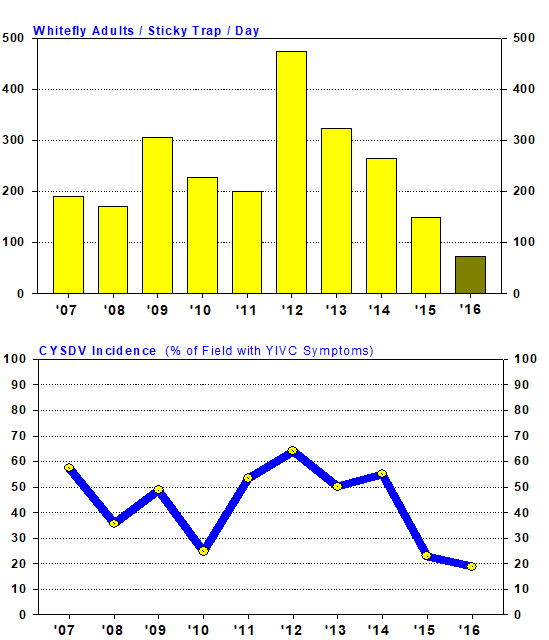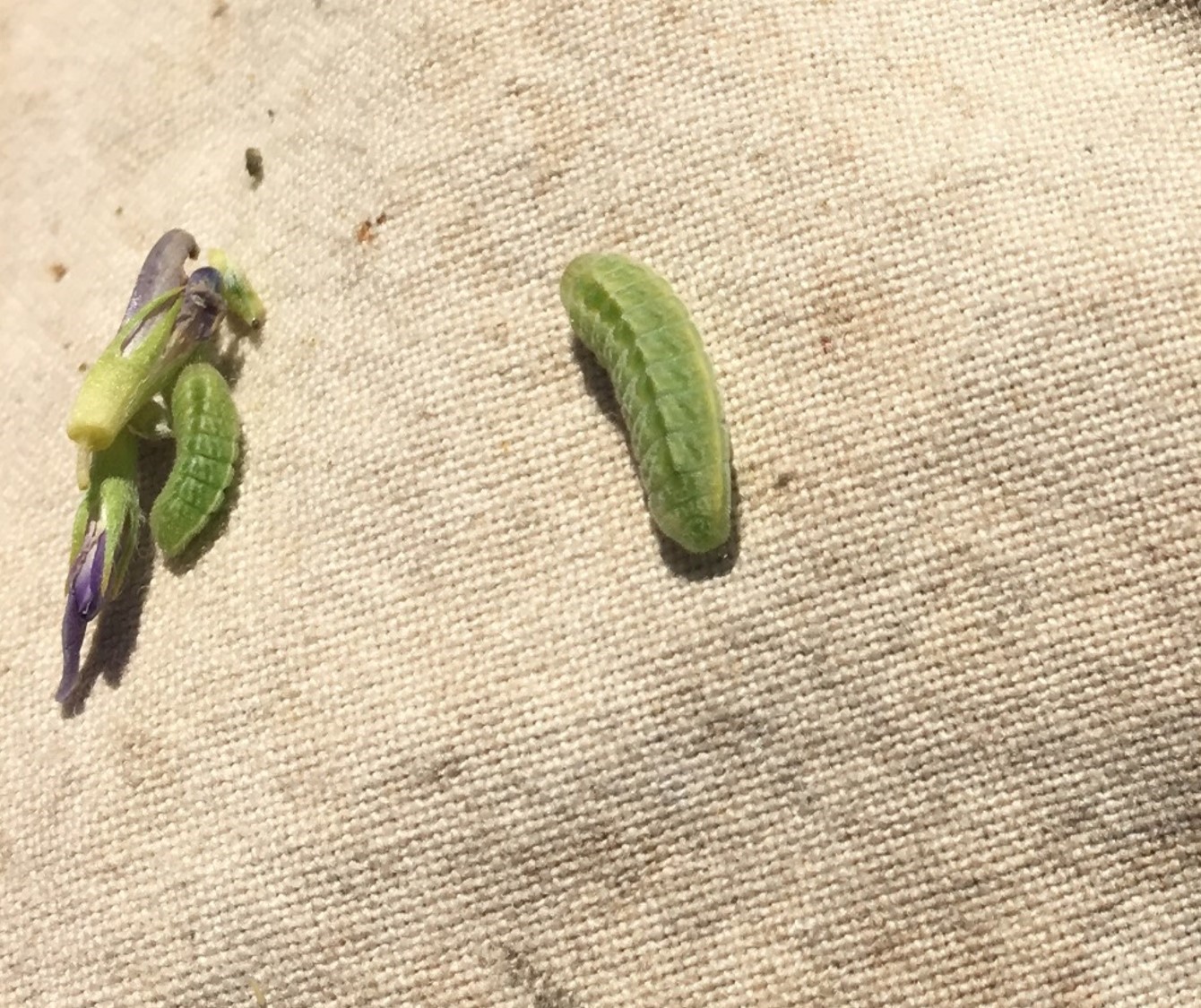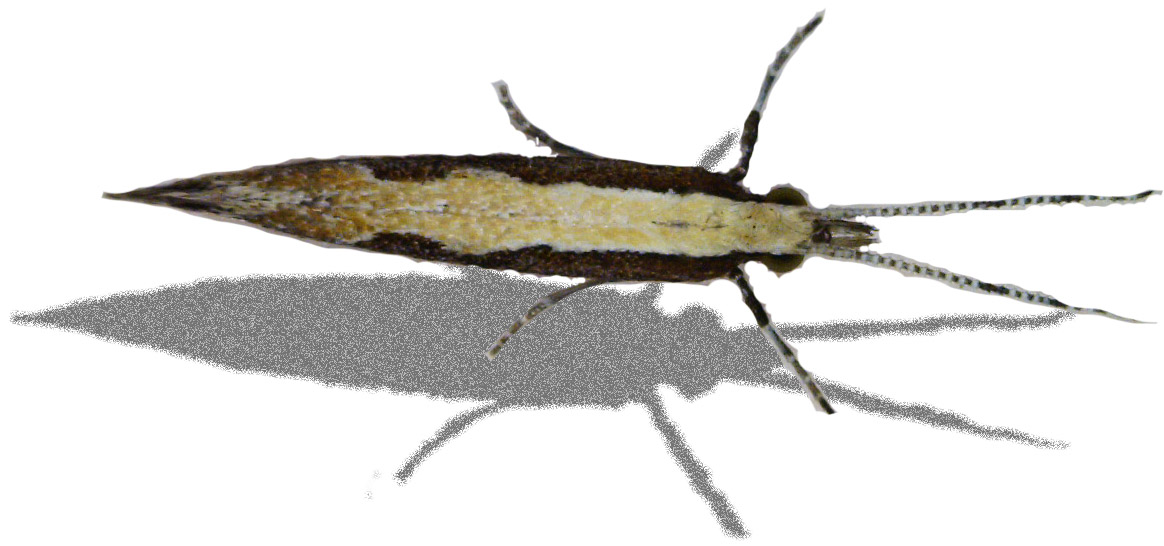
|
|
|
|

|
|||
|
|
|||
Fall melon planting is right around the corner and local fields are being prepared for planting. Growers and PCAs are well aware of cucurbit yellow stunting disorder virus (CYSDV) and the impact it can have on fall melons. This whitefly transmitted crinivirus was first identified on desert melons in the fall 2006 where widespread infections on cantaloupes, honeydews and other melons occurred. CYSDV can cause significant losses in melon fruit yield and quality, and without question, desert melon crops have been seriously affected by this virus. Melon IPM has also been impacted by CYSDV where insecticide usage on fall melons has increased significantly. We have been studying the epidemiology of CYSDV for over 10 years trying to understand the complex relationships between the virus, vector and our local cropping system. Our ultimate goal is to develop practical approaches for reducing CYSDV impact on fall melon production. In addition, we continue to develop new information on chemical control of the whitefly vector (Bemisia whitefly adults). | |||
| Back | |||
|
For questions or comments on any of the topics please contact Marco Pena at the Yuma Agricultural Center.
|
|||
|
Home |
Cotton | Veggies |
Forages | Grains
| Citrus |
Crop x Crop Insects | Diseases| Weeds | Pesticides | Economics | News | Weather | Research | Photos | Contacts | General Info. Copyright © 2001 University of Arizona, College of Agriculture and Life Sciences Webmaster: Al Fournier (acis@ag.arizona.edu) |
|||



